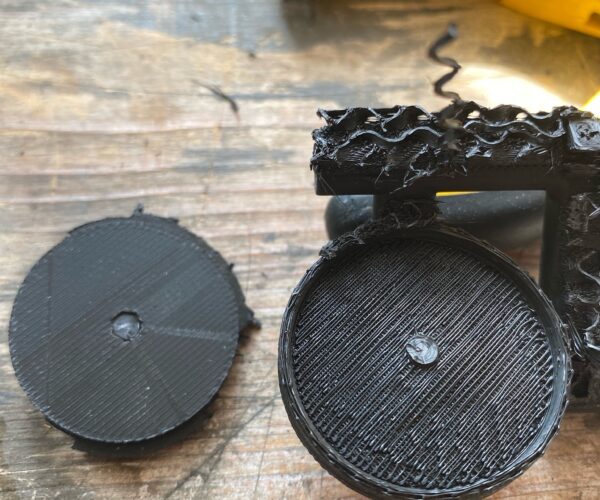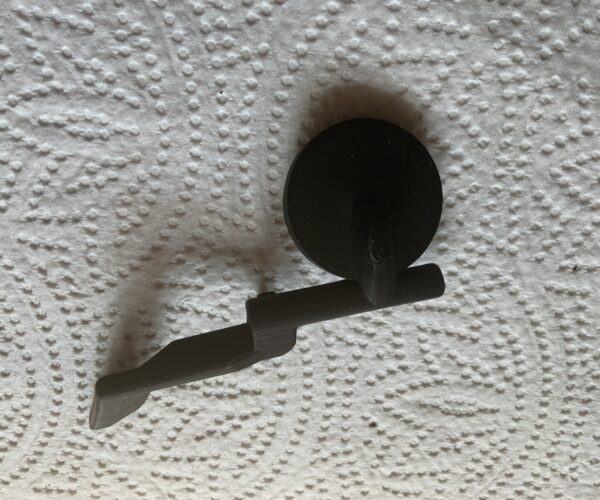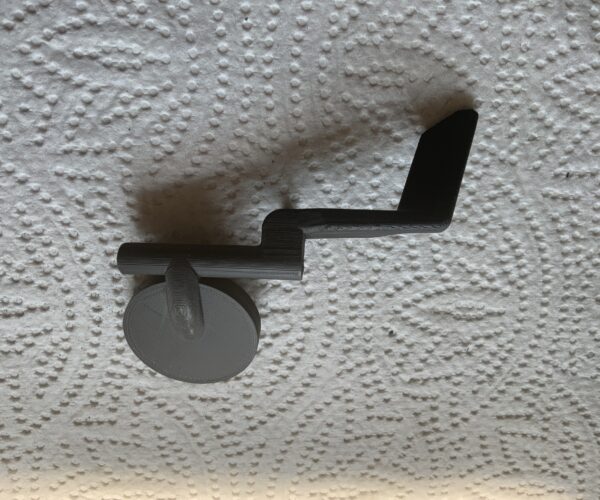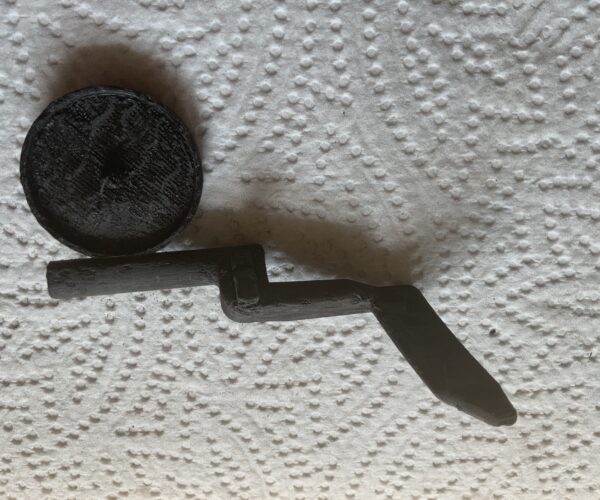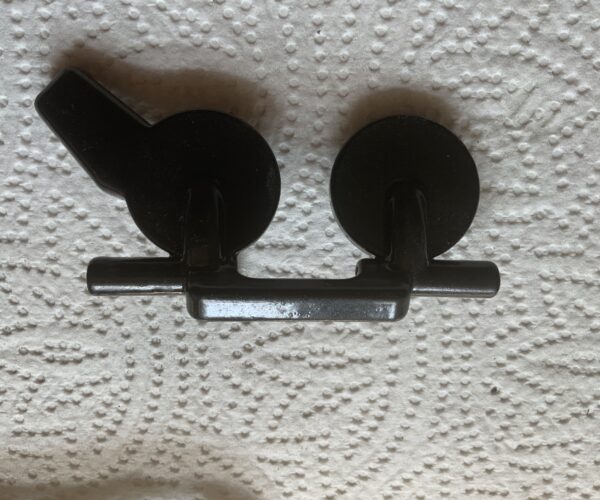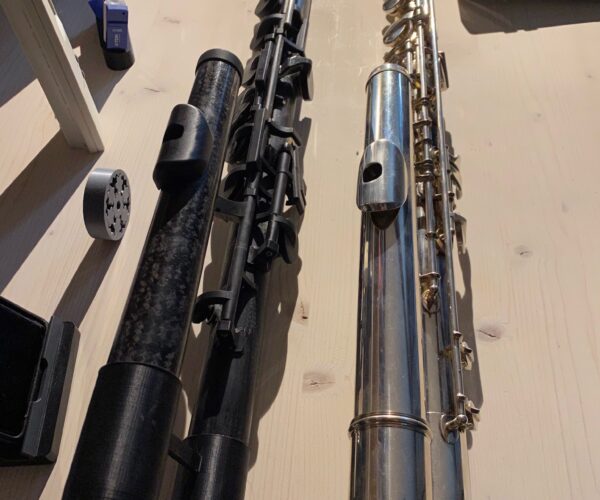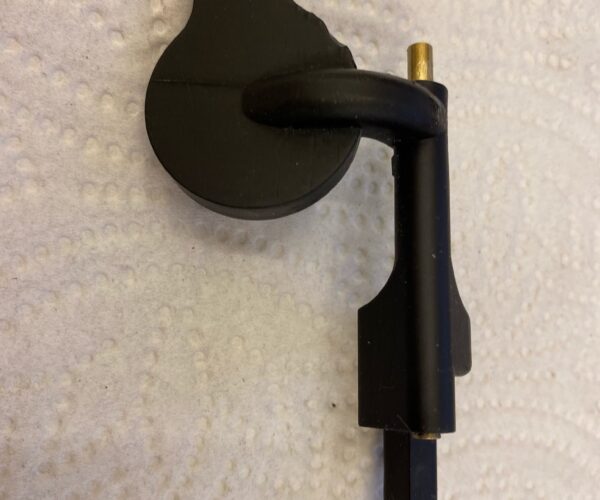Bassflute mechanical parts
Hi, I am new here.
After succesful printing the mechanical parts of my Bassflute with PLA, I am now trying to print them for technical reasons (temp stability, smoothing) with ASA.
Print quality is ok after smoothing, the bottom quality is poor and not useable, as the pads need a pefect surface.
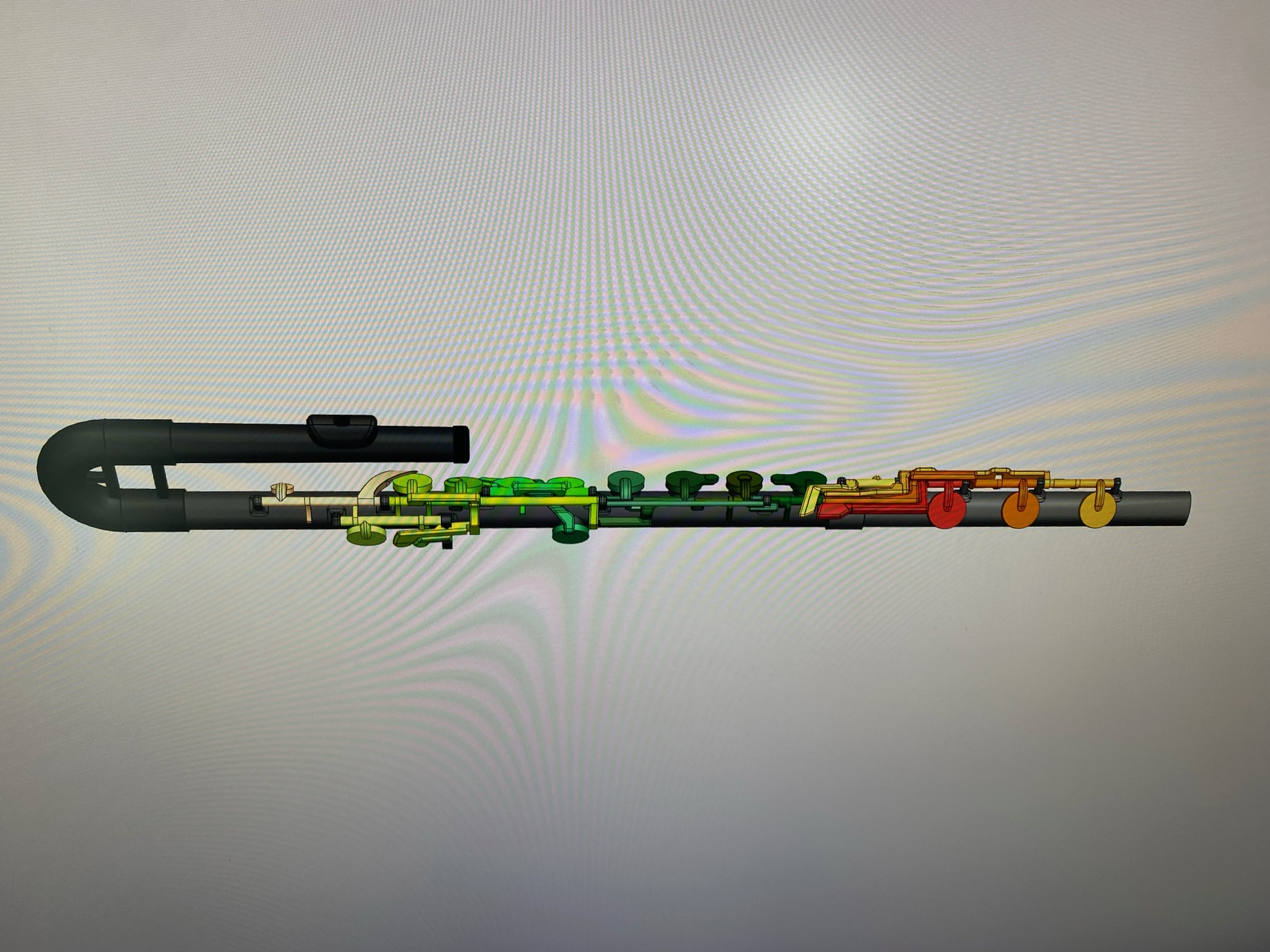
Orientation of the part like this for better top suface:
Result: hard to remove support roof. X distance from roof support to bottom of object is 0.2.
left roof support.
What would be your slicer settings for ASA ?
Thanks for support😀
Erich
Printer, filament
I am using original Prusa I3mk3s in Ikea enclosure.
prusament ASA jet black.
0.1 mm layer
slicer: cura, prusaslicer
that's an impressive project...
could you do this better😩?
most likely not me, but there is always somebody who can...
Apart from throwing around stupid jokes, I wanted to challenge your choice of material.
My personal journey with and away from ASA started with the same considerations (temp stability and being able to vapour smooth). Not having had the patience to build an enclosure and of course for lack of availability of IKEA here in New Zealand, I was quickly frustrated with the stuff and gave up on it. Which lead me to having a play with more user friendly materials.
For better temperature and UV resistance you could consider CPE (as your name suggests that you might be somewhere in the DACH region, Fillamentum from the Czech Republik have a really nice CPE material, they do large lineup of other materials that might be of interest for your flute).
The other material that, after initial hickups with too much stickiness, I found surprisingly pleasant to work with is the Prusament PC-mix. Gives you lightweight but mechanically solid results. That might also be worth considering for the flute.
There is most likely quite a bit of potential to improve the results by tweaking model orientation and slicer settings, but I leave those to people more experienced than myself.
Good luck with the project, I hope that it will show up in the Awesome Prints section of the forum some day...
Hansjoerg
Your underlying problem is that those parts were not designed for FDM. They have been tuned, over centuries, for metal fabrication and assembly...
In this type of situation a common stop-gap is to cut the part in the horizontal plane, print and glue together. This may be enough to complete this project but in the long run it will pay to redesign the mechanism and tune it for FDM.
Let's see: You can get rid of the hump on the back which is inherited from the need to weld/solder metal parts together. The threads are too fine to print strongly, you may need to retain them to mesh with commercial parts in the short term but aim to replace both and simplify the issue.
Cheerio,
RE: Yes - its not trivial
Thanks for your replies.
I am goint to check out the CPE Filament. But themal stability only to 80 dgrees is meeh for me. Temp in a car in summer can go past 60degrees C.
traditionally mechanic of flutes are made out of brass/silver. But some modern developements do exist and are working. (Eg. Guo, matit, )
We designed the parts to be funcionable as fdm prints. - Dimensions are customised.
here is a picture of the pre prototype with resin printed parts. Resin prints are very precise, but in long term not usable for a music instument. They crack to easy..
btw. 3d drawing was made by my son ..
I found a way to sand the bottom surface of keycups. So I can use the fdm printed parts.
fdm printed
resin printed part:
fdm printed part:
Again- thank you for your Inputs - please let me know what you think, I am open and graceful for your creativity and wisdom.
Erich
Another fluter (floutist?) was active here
Unfortunately, @clint-g doesn't seem to be active here anymore. He was very active on the breath flute project. It might be worth comparing notes.
and miscellaneous other tech projects
He is intelligent, but not experienced. His pattern indicates two dimensional thinking. -- Spock in Star Trek: The Wrath of Khan
